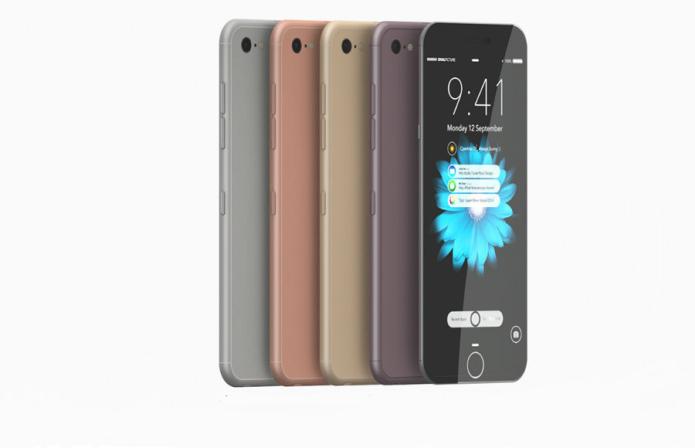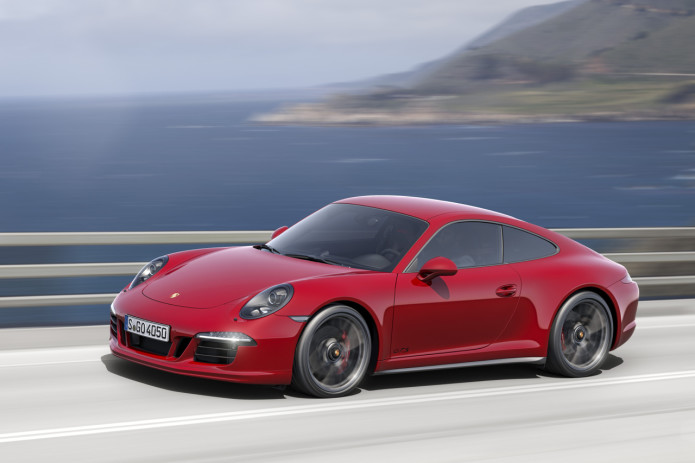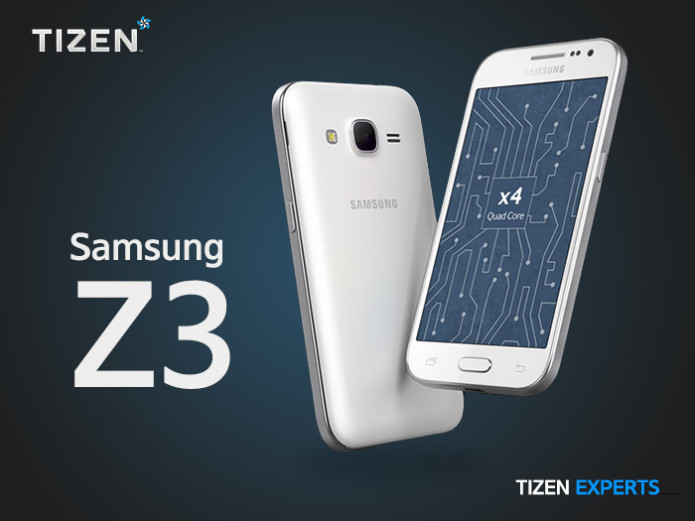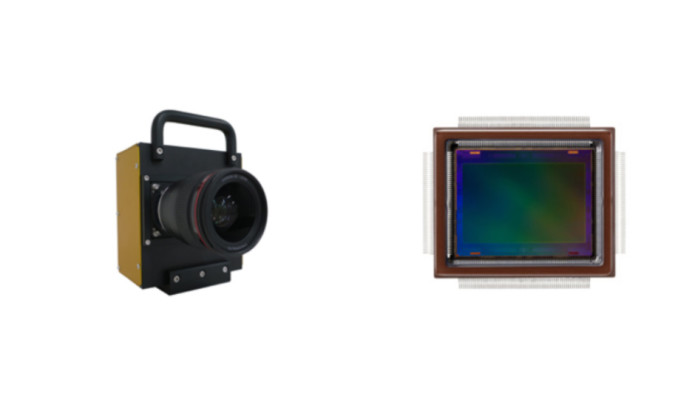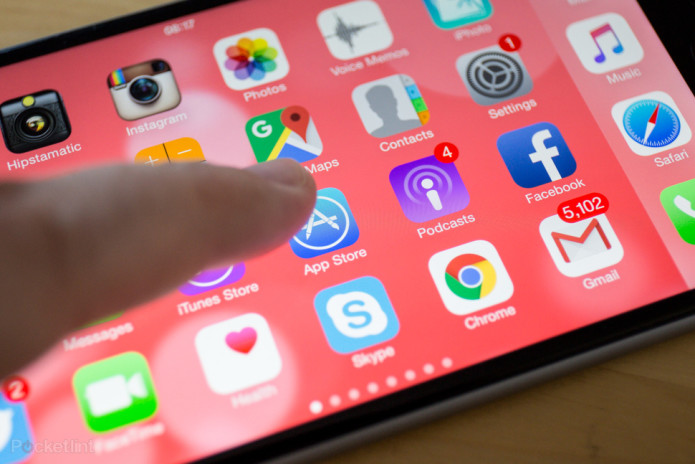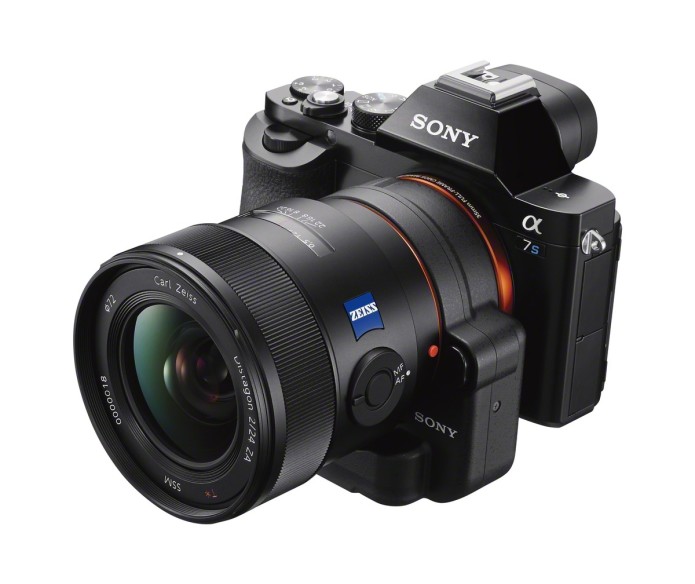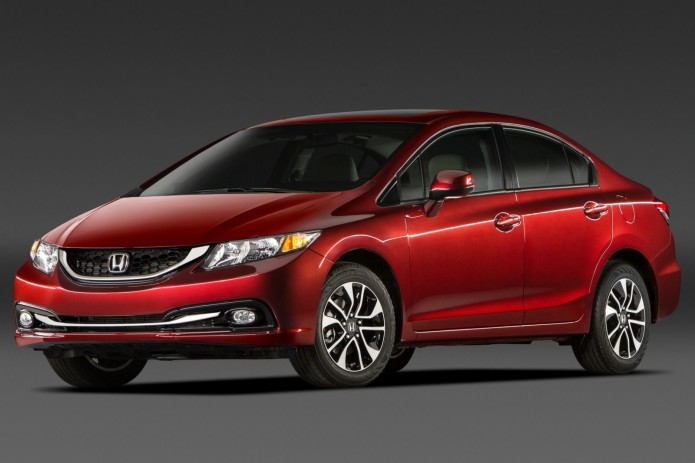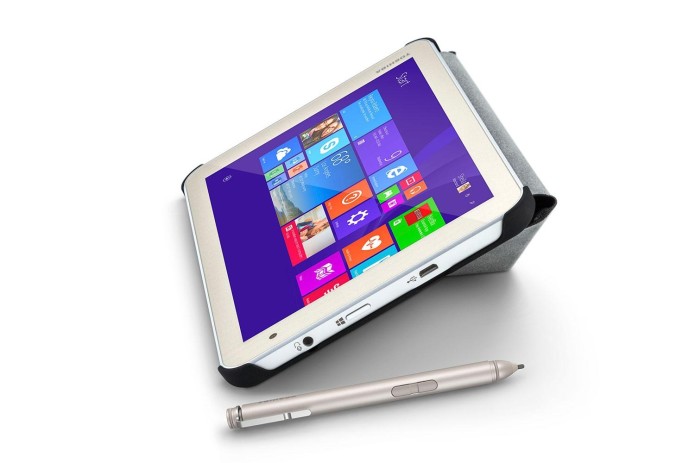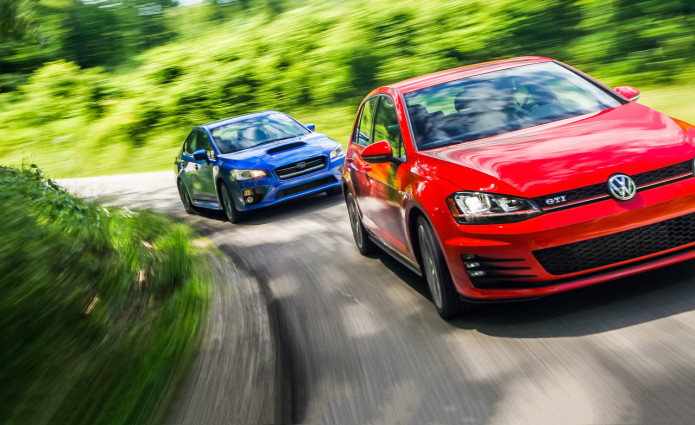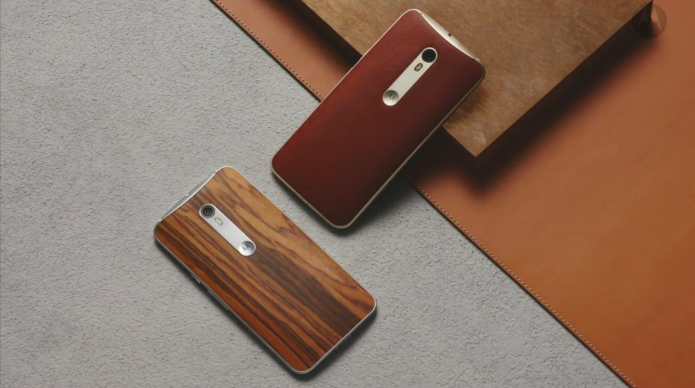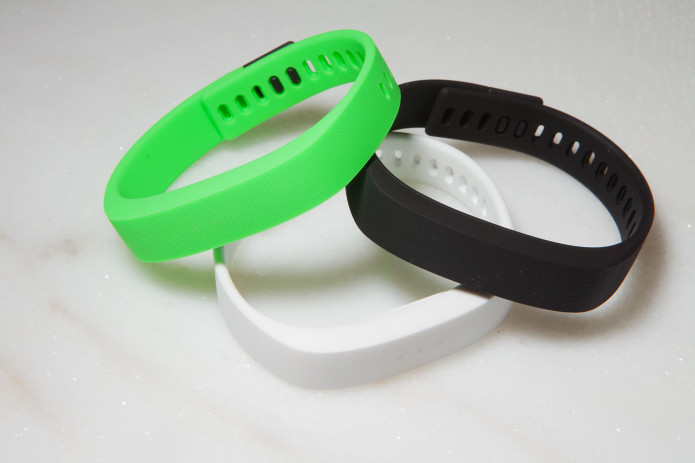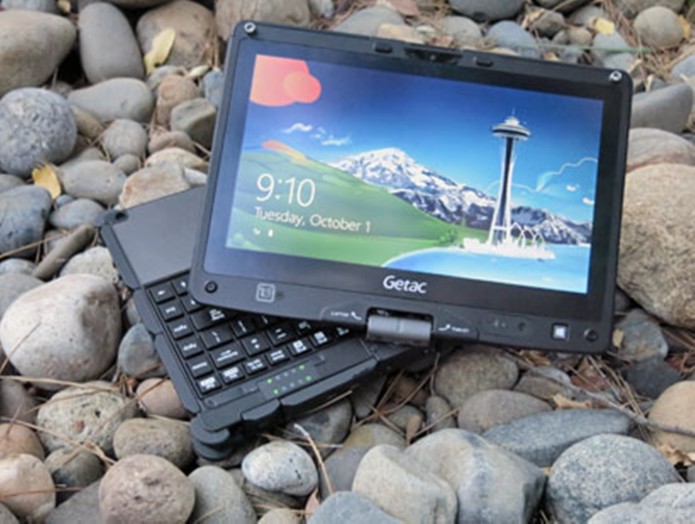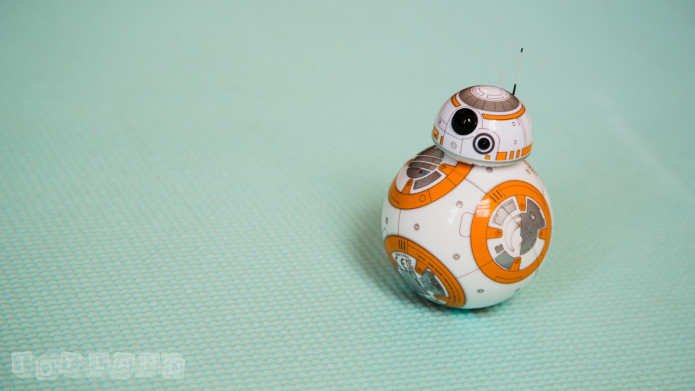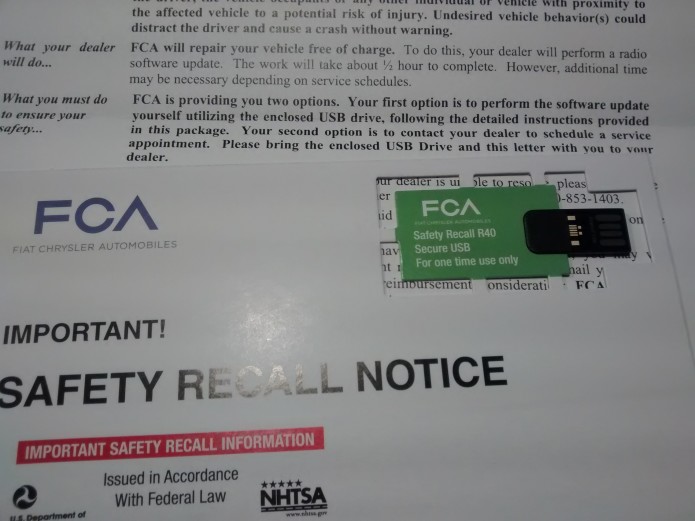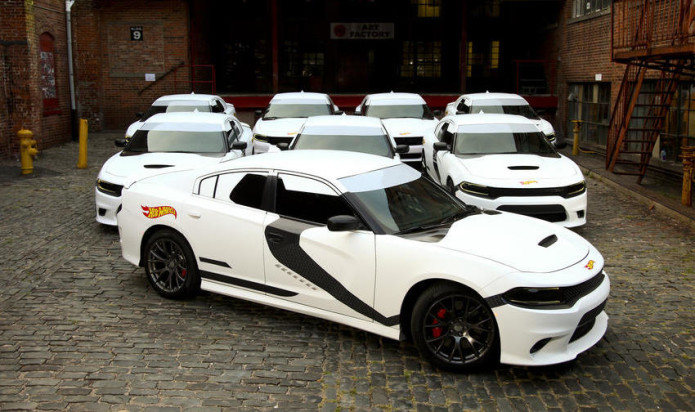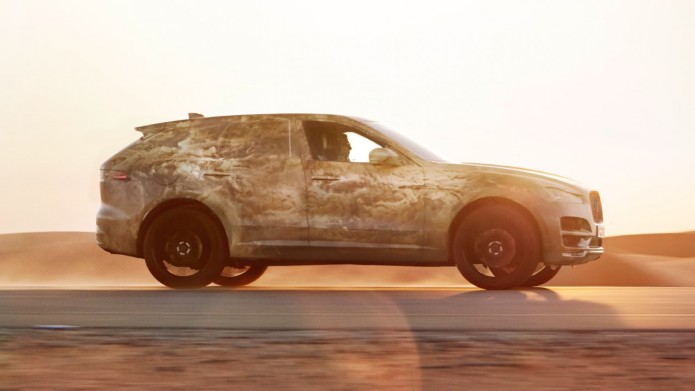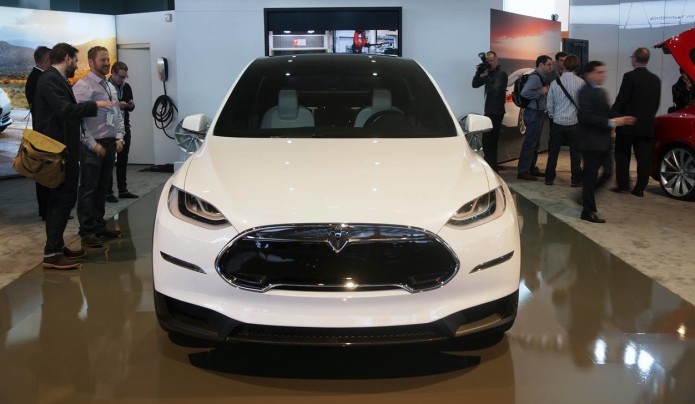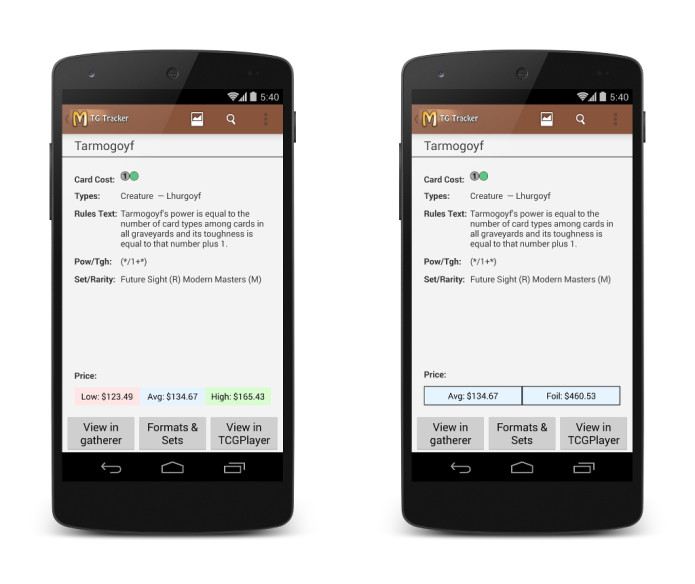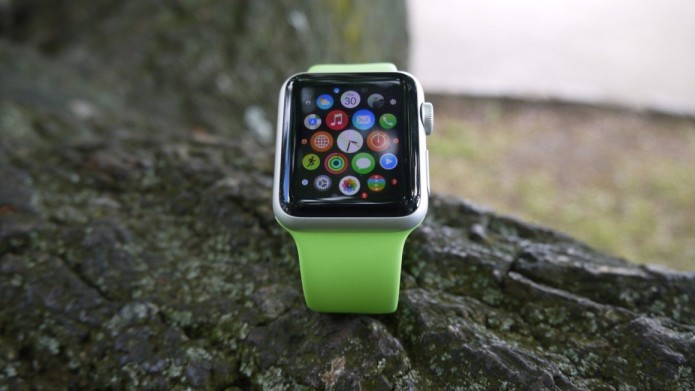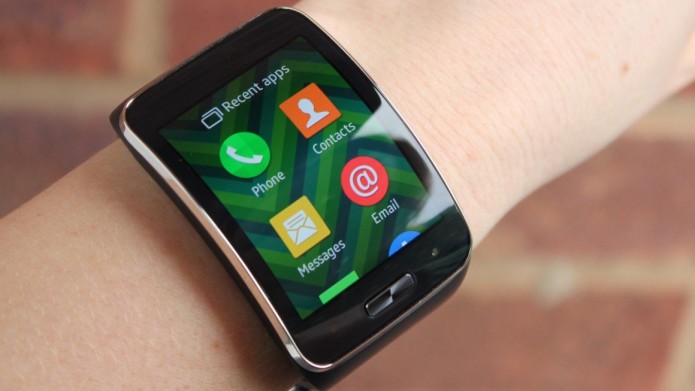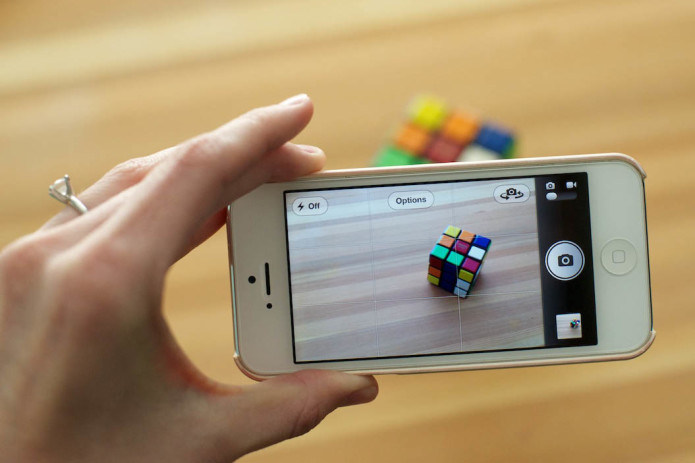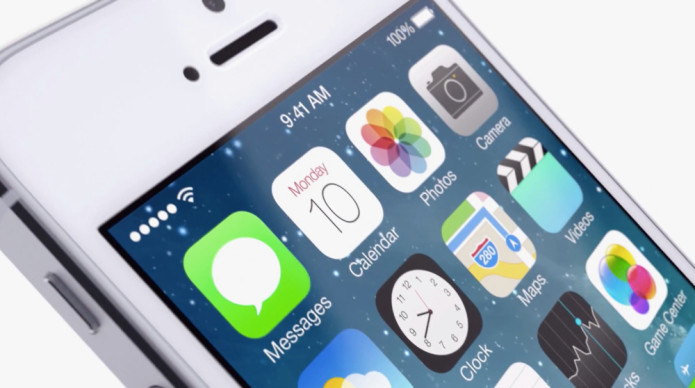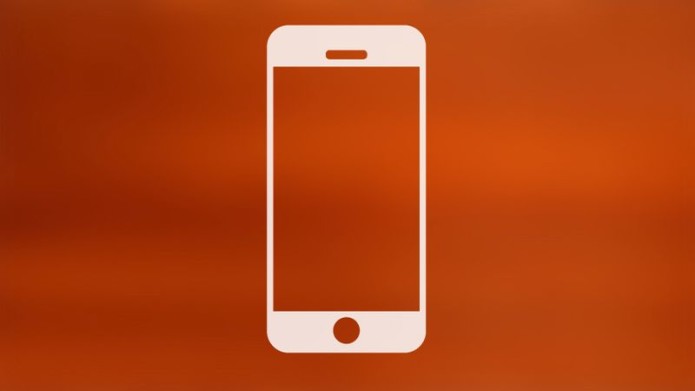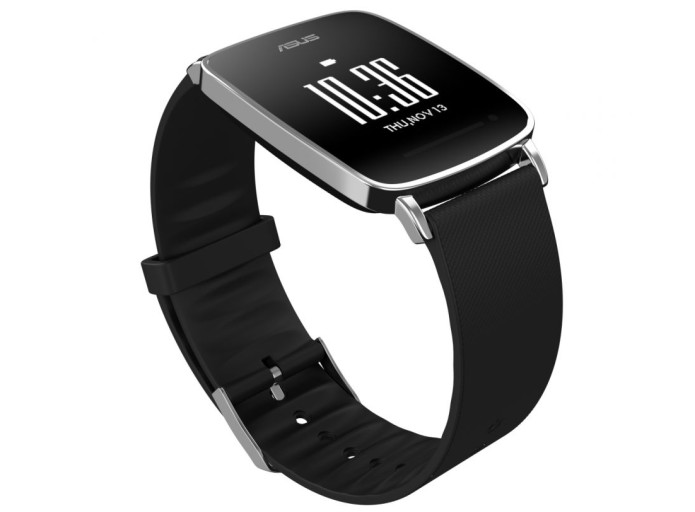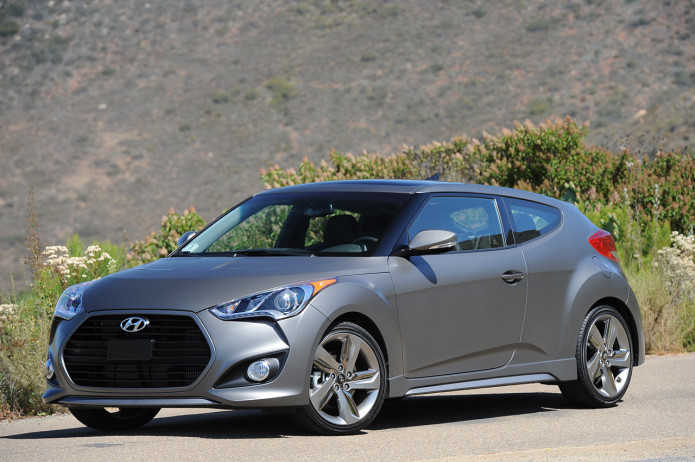It seems that the latest tech obsession these days are batteries and that fever is reaching beyond just smartphones and tablets. A newly published patent has revealed that even Apple is considering alternative forms of power source to fuel not its iPhones and iPads but its future MacBooks. And the technology it is mulling over is none other than fuel cells. In theory, a MacBook that bears a fuel cell battery, in addition to a conventional lithium ion one, can last for days, maybe even weeks, on a single charge.
…
Read full post here:
https://www.slashgear.com/apple-patent-hints-at-macbook-with-fuel-cell-power-07402244/
Monthly Archives: September 2015
iPhone “7” tipped to be as thin as 6mm
We haven’t even gotten the formal announcement of the “iPhone 6S” fromApple yet, but as is tradition with the company’s smartphone, we’re already hearing rumors and speculation about the next model. Ming-Chi Kuo, a KGI Securities analyst that most Apple/iPhone followers will recognize a fairly reliable source of leaks and hints, has said in his latest report that the 2016 model of the iPhone, tentatively known as the “iPhone 7,” will be drastically thinner than the 6/6 Plus we have now.
…
Read full post here:
https://www.slashgear.com/iphone-7-tipped-to-be-as-thin-as-6mm-07402259/
Porsche’s new 911 Carrera packs a turbo engine and more speed than ever
We have known for a while now that the next generation 911 would be fitted with a turbo engine in all forms. The new 911 Carrera has been unveiled packing its turbo engine and Porsche says that it is the best performing 911 Carrera made so far. Porsche says that the new car is the fastest 911 Carrera ever and has abundant torque for passing power.
The new car was ten seconds faster than the old on the North Loop of the Nurburgring with a time of 7 minutes and 30 seconds. The new Carrera S has the option of rear-axle steering for the first time ever. The new turbo engines are the biggest change, but the outside of the car has been refined as well.
…
Read full post here:
https://www.slashgear.com/porsches-new-911-carrera-packs-a-turbo-engine-and-more-speed-than-ever-07402251/
Samsung Z3 leaked in new photos, Tizen OS lives on
While Samsung just revealed its Galaxy S6 Edge+ and Galaxy Note 5 only weeks ago, it seems the company is plowing forward on yet another large-screened smartphone. This time it’s Samsung’s latest device to be powered by their own Tizen operating system: the Z3. A pair of new leaked images reveal the phone is much larger than its Z1 predecessor, in line with the previous rumor of it featuring a 5-inch Super AMOLED display.
…
Read full post here:
https://www.slashgear.com/samsung-z3-leaked-in-new-photos-tizen-os-lives-on-07402265/
Canon develops 250MP APS-H CMOS sensor
Canon has announced the development of a new CMOS sensor for digital cameras that has the world’s highest resolution for its size. The sensor is APS-H sized and has 250MP of resolution. That is 19,580 x 12,600 pixels. The little sensor measures 29.2 x 20.2 mm and boasts the highest number of pixels or a CMOS sensor smaller than the size of a 35mm full frame sensor.
The high-resolution camera sensor can do some impressive feats. Canon says that when installed in a camera, the new sensor was able to capture the lettering on the side of an airplane flying about 18km from the shooting location.
…
Read full post here:
https://www.slashgear.com/
iPhone 6s said to have more advanced “3D Touch” Force Touch
Now that IFA 2015 is over, we’re counting down the days to the next big thing, which is Apple’s grand event that is expected to unveil, among other things, the new iPhone 6s and iPhone 6s Plus. Although we thought we already had most of the features down, thanks to innumerable leaks, there seems to be one last minute detail coming in. It seems that more than just Force Touch, the iPhone 6s and its larger sibling will have a more advanced version currently dubbed as “3D Touch”.
…
Read full post here:
https://www.slashgear.com/iphone-6s-said-to-have-more-advanced-3d-touch-force-touch-06402232/
Sony Alpha A7S Review
Like it or not, we’re on the verge of a 4K revolution. We’ve noted previously that even though content distribution is still “the rub,” content creation and management couldn’t be more straightforward. As long as you have a powerful enough computer with plenty of disk space, you can work with 4K just like you would with full HD—just slower.
Typically revolutions like this start out as very expensive luxuries for early adopters before getting cheaper down the line a couple of generations in. 4K shooting seems to be blowing that timeline right out of the water, at least when it comes to consumer consciousness. While 4K has been around for several years, it feels like just last year when it first started to hit the scene. And yet this year we’re already starting to see 4K-capable cameras available for $2,000 and under. Even if you’re ambivalent about this bold, new, higher-def future, you can’t deny that the options are surprisingly well-executed this early in the game.
…
Read full post here:
https://www.reviewed.com/cameras
2015 Honda Civic hatch review – road test
Honda Civic has a long and distinguished history in Australia. It has been on sale here continuously since 1973 and has grown from a tiny two-door 1.2-litre sedan which revolutionised the design of small cars in Australia through nine generations into one of the classiest and most respected small-medium cars on our local market.
A truly global vehicle, the Civic hatch is manufactured in Britain and was developed with extensive testing throughout Europe. Its sedan sibling is built in Thailand.
That ninth generation Civic has been on sale here since February 2012 and had its refresh button tapped earlier this year with some minor design tweaks, new safety technology and infotainment improvements.
…
Read full post here:
https://www.carsguide.com.au/car-reviews/2015-honda-civic-hatch-review-road-test-35133
TOSHIBA ENCORE 2 REVIEW
HIGHS
- Nice IPS screen
- Ships with one year of Office 365
- Attractive, if simple, design
LOWS
- Only 1GB of RAM
- No HDMI-out
- Battery life could be better
- Occasional performance issues
Toshiba’s latest Windows tablet looks good, especially considering it’s selling for under $200. But despite a nice screen, its performance is hindered by a lack of RAM, leading to occasional slowdowns and hang-ups.
(There is also a 10-inch version. This review is for both.)

Device makers continue to push Windows 8 tablets as an alternative to their more popular Android and iPad counterparts. The 8-inch Toshiba Encore 2, with its $200 price tag, is at least competitive when it comes to price.
The inclusion of a year’s subscription to Microsoft’s Office 365 adds some extra value to a Windows tablet that’s already available for as low as $180 on Amazon.
If you want 2GB of memory, along with double the internal storage (64GB), you can pick up the 10-inch version, direct from Toshiba for $280. But the larger model’s screen still sports the same 1,280 x 800 pixel resolution, which is bound to look worse on a larger display.
Is the Encore 2 worth it, and how does it stack up against other small Windows 8.1 tablets like Dell’s Venue Pro 8? Find out below.
Plain, but not ugly
The Toshiba Encore 2’s shell looks like it’s made of silver aluminum, but the sides and back are made of plastic. Still, the tablet feels solidly constructed, and the curved back feels comfortable in the hand. But at 0.37 inches thick and 0.84 pounds, the Encore 2 isn’t overly thin or light.
The tablet’s shell looks like silver aluminum, but the sides and back are actually plastic.

Button and port layout is mostly focused around the top of the device (when held in portrait orientation). Slim power and volume buttons live on the right edge, just above the MicroSD card slot for adding extra storage. The left edge is bare, while the bottom edge houses a slot for adding a wrist strap.
On the top edge, you’ll find a Micro USB port for charging and connectivity, as well as a headphone/mic combo jack. Also on the top edge, or in the upper-left corner if you’re holding the tablet in landscape mode, is the Windows button.

Most Windows tablets stick the Windows key on the front as a capacitive button. Here on the side it’s not as easy to accidentally press when you’re holding the tablet, but it’s also harder to find when you actually want to use it. In our time testing, we frequently confused it with the power button, which is the same shape. After a while, though, we’re pretty sure we’d get used to the layout.

The back of the tablet houses a pair of speakers, which sit near the bottom edge when you’re holding it in landscape orientation. While we appreciate that there are two speakers, sound output is only okay.

We’d like more volume and, ideally, some discernable low-end. But we weren’t exactly expecting that from a low-cost tablet.
Attractive screen, tiny desktop
Windows tablets have a problem when it comes to screen resolution. Increasingly, Android and Apple tablets sport resolutions at or above 1080p. Drop one of those screens into a small Windows tablet, and things will look great in the Modern UI where the apps live. But jump into the traditional Windows desktop, and buttons and menus become too small.
Even with the 1,280 x 800 pixel screen in the Encore 2, many of the clickable desktop items (like things in the system tray) are frustratingly small and difficult to click. You can fix that by upping the OS scaling in settings, but the tablet doesn’t do this by default. And assuming you’re savvy enough to change the scaling setting, the end result makes the traditional Windows environment feel cramped, as if you’re using a low-resolution screen.
Toshiba does, though, deliver an attractive IPS screen with the Encore 2. There are no viewing angle issues, and the screen is bright enough that we left it at 50 percent brightness during our indoor testing; it never looked dim.
Windows 8.1, now with Bing!

The Encore 2 is one of the first devices we’ve seen that runs Windows 8.1 with Bing, a lower-cost version of Windows that ships with Bing as the default search engine in Internet Explorer. The new version of the OS also has lower system requirements, which is why this tablet is also one of the first modern Windows devices to ship with just 1GB of RAM. Unfortunately, we can expect to see more in the near future.

Otherwise, the OS seems identical to the standard version of Windows 8.1. And we were able to change the search provider in Internet Explorer from Bing to Google without jumping through any hoops. So Windows with Bing isn’t a lesser version of Windows. It’s just front-loaded with Microsoft’s search engine.
Still, we can’t ignore the old refrain about the lack of apps in the Windows Store. Every time we revisit Microsoft’s app ecosystem, we come away feeling just a little bit better. There are a couple more big-name apps now, and the number of apps seems to be growing. But there are still far fewer quality apps available for Windows than there are for either iOS or Android. And chances are, if you’ve used one of those operating systems in the past, a few of your favorite apps will be absent in the Windows store.
Of course, because the Encore 2 runs Windows, it can run also run most traditional Windows software. That’s definitely a plus for the tablet (and Windows slates in general). But having millions of non-touch-optimized programs available is not the same thing as having a modern app store full of appealing apps—particularly for a tablet. And because this tablet has only 1GB of RAM, it won’t run as many standard Windows programs (or run them well), either.
Camera complications

Tablet cameras typically aren’t great—especially on budget-priced slates. And the 5-magapixel rear-facing shooter here is no exception (there’s also a 1.2-megapixel camera up front for video chats). But really, we don’t care. Tablets are too big and unwieldy to make for good cameras anyway, whether you care about looking silly or not.
Still, the camera here is passable, at best. Bright daytime shots look okay on the tablet screen, but indoor shots, even in fairly bright light, often look grainy and washed out. When looked at on a large 1080p monitor or TV, the pictures look even worse. You should be able to get much better pictures from a decent mid-range smartphone.
We need more RAM, folks
An Intel Atom CPU and 32GB of internal storage is pretty much par for the course when it comes to budget Windows tablets. Toshiba has, though, dipped down to just 1GB of RAM in this model, as we mentioned earlier. You do, though, get a newer CPU than we’ve seen from previous Windows-based slates. Toshiba outfitted the Encore 2 with a four core Bay Trail-T Atom Z3735G, clocked at 1.4GHz.
How does all that translate to benchmarks? On paper, things seem okay. The Encore 2’s score of 2,204 in PCMark 7 puts the Toshiba Encore 2 technically ahead of the older Dell Venue 8 Pro, which scored 2,166 on the same test. But in our testing, the Dell tablet was more reliably responsive.
The Encore 2 was usually responsive, but it occasionally became sluggish.
In actual use, the Encore 2 was a mixed bag. Usually, it worked well. Browsing in Internet Explorer felt responsive. Most games, including SoulCraft and Zombie Driver HD, ran well, also. But when gaming in particular, the back left side of the tablet got noticeably warm. We clocked it as high as 108 degrees using our infrared heat gun. That’s not warm enough to feel hot, but it’s steamy enough to be uncomfortable to hold for long periods.
Also, while the Encore 2 was usually responsive in our testing, it occasionally became sluggish, often when downloading and installing Windows updates or apps. And at least once, the tablet became so stuck that we needed to reboot it by holding down the power button.
Overall, the tablet is responsive enough to use for Web browsing, running most apps, and light productivity. But we suspect the extra 1GB of RAM found in most Atom-based Windows tablets makes a difference. The Dell Venue 8 Pro, for instance, didn’t have the same intermittent performance issues we had with the Encore 2.
Battery life
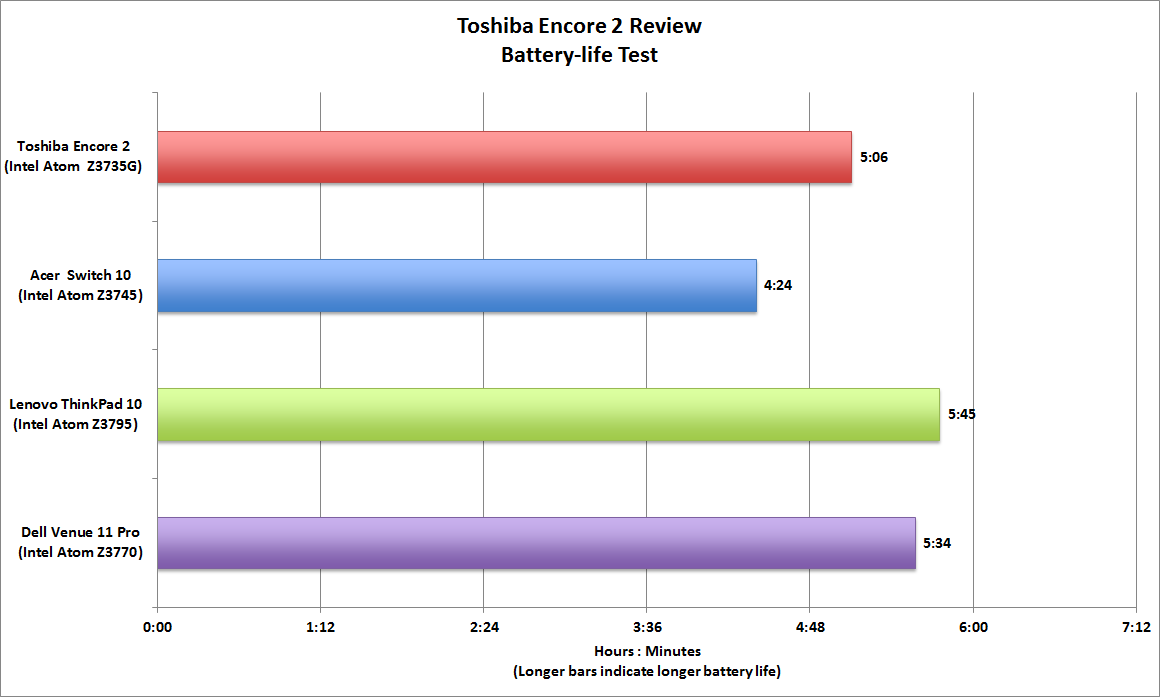
Toshiba claims you can get up to 11 hours of battery life with the Encore 2. In our testing, using the tablet frequently, downloading and installing apps, running benchmarks, browsing the Web, and playing a couple games, the tablet shut down after 8 hours and 2 minutes. And keep in mind that we kept the screen brightness at about half through most of that time. Eight hours of use isn’t terrible, but good Android tablets, as well as Apple’s iPads, still have greater longevity.
Conclusion
If you’re looking for a compact Windows 8 tablet at the lowest price possible, Toshiba’s Encore 2 8 isn’t a bad choice, particularly if its asking price dips even more, as other Windows 8 tablets have in the past.

At $180, it’s not exactly expensive for a Windows tablet, but the only thing that really sets it apart from other similar slates is its 1GB of RAM; most older Windows 8 tablets have 2GB. That’s not a good thing, especially when the Encore 2 had occasional performance hiccups in our time with it. It’s possible, though, that future software updates will fix this issue.
And while the Toshiba tablet does have a nice IPS LCD screen, so does Dell’s Venue 8 Pro. The Dell tablet, while its processor is a bit older, felt more responsive and consistent in our time with it, likely thanks to its extra RAM. And while the Venue Pro 8 launched at $300, it’s now cheaper. As of this writing, B&H Photo and Video has the Dell tablet listed for the same $180 as the Encore 2 8 sells on Amazon. Given the choice between the two, we’d go for the Dell tablet and its extra RAM.
(digitaltrends.com)
2015 Subaru WRX vs. 2015 Volkswagen GTI – Comparison Tests
You have heard plenty over the years about Subaru’s rally-inspired WRX. And, owing to its longer life span, you have probably heard even more about Volkswagen’s genre-defining hot hatch, the GTI. It’s now in its seventh generation.
Goodness knows, you’ve also heard plenty from us about the southern Ohio area of Hocking Hills around Cedar Falls. We’ve been such ardent and vocal fans of the area’s beautifully maintained and lightly traveled roads that even the Hocking Hills 2014 Official Visitors Guide magazine devotes a story to what it describes as the “now-legendary” Car and Driver loop.
So it seemed only right that we should make another pilgrimage to our de facto southern base with the new iterations of these two storied performance cars.

For 2015, Subaru completely reworked the WRX, basing it on the current Impreza sedan. While the hatchback version is no longer available, say “WRX” and the image that probably pops into mind is the notchback version anyway. And of course that imaginary WRX wears some hue of the medium-blue paint that Subaru has used since the old Colin McRae 555 World Rally glory days of the mid-’90s. No surprise, then, that our test car wore WR Blue Pearl.
Because it’s a WRX, it is—let’s just come out with it—aesthetically challenged. Subaru teased us with an extremely cool-looking WRX concept vehicle a couple of years ago but then came to its senses and produced a head-scratchingly awkward thing. All is right with the world.
Bolted into the new, slightly larger body is a turbocharged and direct-injected 2.0-liter boxer-four (a so-called FA-series engine) making 268 horsepower and emitting at least a hint of that typical Subaru exhaust-note thrum. It’s backed by a six-speed manual and, of course, comes standard with four-wheel drive. Our Premium-pack model stickers for $29,290.

It seems the seventh-gen GTI has been with us for a year or more, but it’s only just now going on sale in the U.S. Indeed, it was in our July 2013 issuethat this very same new GTI, in Euro spec, dusted the Ford Focus ST in a comparison test in southern France. That explains why the saucy Ford wasn’t invited back for this round. Based on all-new architecture, the 2015 GTI is bigger in all dimensions except height, and it carries the newest EA888 turbocharged and dual-injected 2.0-liter inline-four making 210 horsepower in standard trim and 220 in a Performance package–equipped version, such as our test car. It also has a substantial bump in peak torque (to 258 pound-feet, up from 207) and now wears proper summer tires that previously were only occasionally available from the factory. The standard “Clark” plaid fabric seat inserts seem even more plaid-y, as well. Our low-spec model stickers for $28,305 with the Performance package ($1495) and Lighting package ($995).

As you can probably imagine, our days are long and arduous—what with the demands of our clearly well-deserved celebrity status in these parts—and so we must periodically retire to the relative anonymity of the South Bloomingville Tavern, a country bar on the loop that is so thoroughly country that its jukebox is stocked with music ranging from country to western (and also Mountain’s seminal hit, “Mississippi Queen”). There, we would deliberate the outcome of this comparison test . . . actually, that’s not true. We’d determined the winner much earlier in the day. This gave us ample time to discuss more pressing matters, such as the source of the appeal of Andy Capp’s Hot Fries (available behind the bar), the veracity of the local legend about the King Toad and his Urine-Filled Mushroom Chalice*, and also how long it would take me to get punched in the face if I didn’t stop (unintentionally) effecting a cartoonish Southern drawl.
2015 Subaru WRX
Second place: The Legends of the Cedar Falls.

We swear we like the WRX. We’ve always liked WRXs, even that one with the horrible pig nose. We would shed a fat, lonely tear into our bottle of Bud (with the American-flag special-edition label) at the South Bloomingville Tavern if ever the WRX left us for good. So don’t assume that the brutal stomping the WRX has taken here means we aren’t charmed by the car.
Here’s the good news: The Subaru is fractionally more fun to drive around our loop of decreasing radii and the apex-at-the-crest-of-a-hill naughtiness than the GTI. It pivots into corners with uncommon certainty. Its low center of gravity (an inch and a half lower than the VW’s) and freshly starched suspenders keep the body level in pretty extreme circumstances. And, if you’re willing to drop the clutch of your personal car with somewhere north of 6000 rpm showing on the tachometer, the WRX can bolt to 60 mph seven-tenths of a second quicker than the GTI can (5.1 seconds to 5.8).

But that is really the crux of the biscuit, isn’t it? In the real world, without the brutal launch, the WRX gets to 60 mph (from a 5-mph roll) in 6.6 seconds. The GTI, which is down 48 horsepower on the WRX, goes from 5 to 60 mph in 6.7 seconds. The difference in times speaks specifically to the WRX engine’s lack of flexibility. We know mummies with greater flexibility. Despite having the same number of cylinders and turbos and the same total engine displacement, the WRX is a toggle switch to the GTI’s rheostat. It reminds us a bit of the first great wave of turbo engines in the ’80s: Often you got less power than you wanted, sometimes you got way more than you could handle, but rarely did you ever get the exact amount of power you anticipated.

Compounding the uneven power delivery is a touchy throttle that, even with the measured use of your right foot, results in a festival of herking and jerking. Outside of the loop (like, for example, the roughly five hours of driving it takes for us to get there), the WRX’s tensed suspension is tiresome, thwacking and heaving uncomfortably down the road. Tire and wind noise add to the unnecessary sensory assault. And the thing wanders on the highway as if it carries with it its own heavy crosswinds that affect no other nearby vehicles.

The WRX allows its drivers to indulge in World-Rally dreams. Unfortunately, the real world is mostly transport stages.
On the loop, the WRX is the faster of the two cars. Not by much, but it’s faster. It also has front-end bite that the GTI can’t match. Only the aggressively light, feel-free steering and the spongy brake-pedal action mar the WRX’s back-road buzz.
For good and ill, the new WRX is a great WRX, wholly consistent with its lineage.
2015 Volkswagen GTI
First place: Legends of the Cedar Falls.

It’s hard to imagine how the GTI could have done any better in our scoring. Its balance of attributes appears to be tailored specifically to our points system.
Look, for example, at the “vehicle” category. The GTI has an enormous 19-point margin there, tallying a triumph in every measure except for rear-seat space, which was a tie. Call us dash-stroking softies if you’d like, but when a car company offers a more comfortable, slightly cheaper car with more amenities, better build quality, and cleaner, more-attractive styling inside and out, we are obliged to take notice.

In the “powertrain” section, the GTI takes a seven-point win despite its substantial horsepower deficit. The thanks go to the engine’s linear, torque-rich delivery. It also enjoys a superior-shifting six-speed manual and a stunning 4-mpg fuel-efficiency advantage (26 mpg C/D observed to the WRX’s 22). The same goes for the “chassis” category: The GTI blunts the WRX’s small outright performance advantage (slightly shorter braking performance and 2.5-mph-higher speed through our slalom) by delivering spectacular steering, excellent brake feel, and ride quality that is so much better than the WRX’s that it more than erases the Subie’s small handling edge.

The GTI not only feels more substantial than the WRX (despite weighing 209 pounds less), it simply feels like a consumer product that is better thought out and more carefully developed. Its control relationships and vehicle integration approach perfection, allowing for second-nature smoothness in operation. It’s quieter at idle and at a 70-mph cruise than the Subaru, but significantly louder at full throttle. That speaks to the Volkswagen’s dual-purpose nature. The GTI doesn’t extract payment for its performance the way that the WRX does. It’s rock-solid stable on the expressway, but it rocks out on curvy roads.

Assuming you are not hatch-phobic, it’s hard to imagine another reasonably priced car as satisfying as the GTI.
Driven with equal brio, the WRX will pull away from the GTI. But the GTI is damn quick and agile in its own right. Ultimately, it will load up its outside-front tire and, therefore, require a more judicious corner-entry speed than the Subaru. The Performance package’s electronically controlled limited-slip differential helps banish torque steer to a degree we didn’t think possible (please take note, Ford Focus ST), and it positively bolts out of corners in a way few other front-drive performance cars can, riding a huge, rolling wave of torque.
And yes, the interior materials and fit and finish are spectacular, as expected. The GTI feels like a car that costs at least $10,000 more than the WRX, not one priced about $1000 less.
If you have a taste for the WRX, we understand. It’s a distinct flavor that’s not really offered elsewhere. But it’s a one-note experience with some regrettable side effects. It is the Andy Capp’s Hot Fries of sub-$30K performance cars with non-contiguous three-letter names. But the GTI is the better car.
Final Scoring, Performance Data, and Complete Specs
Legends of the Cedar Falls: Two affordable performance icons on our favorite affordable Ohio roads.
VEHICLE |
2015 Subaru WRX | 2015 Volkswagen GTI |
| BASE PRICE | $27,090 | $25,815 |
| PRICE AS TESTED | $29,290 | $28,305 |
| DIMENSIONS | ||
| LENGTH | 180.9 inches | 168.0 inches |
| WIDTH | 70.7 inches | 70.8 inches |
| HEIGHT | 58.1 inches | 56.8 inches |
| WHEELBASE | 104.3 inches | 103.6 inches |
| FRONT TRACK | 60.2 inches | 60.6 inches |
| REAR TRACK | 60.6 inches | 59.7 inches |
| INTERIOR VOLUME | F: 52 cubic feet R: 41 cubic feet |
F: 51 cubic feet R: 42 cubic feet |
| CARGO | 12 cubic feet | 23 cubic feet |
POWERTRAIN |
||
| ENGINE | turbocharged DOHC 16-valve flat-4 122 cu in (1998 cc) |
turbocharged DOHC 16-valve inline-4 121 cu in (1984 cc) |
| POWER HP @ RPM | 268 @ 5600 | 220 @ 4700 |
| TORQUE LB-FT @ RPM | 258 @ 2000 | 258 @ 1500 |
| REDLINE / FUEL CUTOFF | 6700/6800 rpm | 7300/6800 rpm |
| LB PER HP | 12.4 | 14.1 |
| DRIVELINE | ||
| TRANSMISSION | 6-speed manual | 6-speed manual |
| DRIVEN WHEELS | all | front |
| GEAR RATIO:1/ MPH PER 1000 RPM/ MAX MPH |
||
| AXLE RATIO:1 | 4.11 | 3.24, 2.62* |
CHASSIS |
||
| SUSPENSION | F: struts, coil springs, anti-roll bar R: multilink, coil springs, anti-roll bar |
F: struts, coil springs, anti-roll bar R: multilink, coil springs, anti-roll bar |
| BRAKES | F: 12.4-inch vented disc R: 11.3-inch disc |
F: 13.4-inch vented disc R: 12.2-inch vented disc |
| STABILITY CONTROL | fully defeatable, competition mode | partially defeatable, traction off |
| TIRES | Dunlop Sport Maxx RT 235/45R-17 94W |
Bridgestone Potenza S001 225/40R-18 92Y |
C/D TEST RESULTS |
||
| ACCELERATION | ||
| 0–30 MPH | 1.7 sec | 2.3 sec |
| 0–60 MPH | 5.1 sec | 5.8 sec |
| 0–100 MPH | 13.8 sec | 14.4 sec |
| 0–120 MPH | 21.6 sec | 22.1 sec |
| ¼-MILE @ MPH | 13.8 sec @ 100 | 14.4 sec @ 100 |
| ROLLING START, 5–60 MPH | 6.6 sec | 6.7 sec |
| TOP GEAR, 30–50 MPH | 11.9 sec | 12.4 sec |
| TOP GEAR, 50–70 MPH | 8.0 sec | 8.3 sec |
| TOP SPEED | 144 mph (gov ltd) | 124 mph (gov ltd) |
| CHASSIS | ||
| BRAKING 70–0 MPH | 159 feet | 163 feet |
| ROADHOLDING, 300-FT-DIA SKIDPAD |
0.92 g | 0.91 g |
| 610-FT SLALOM | 46.6 mph | 44.1 mph† |
| WEIGHT | ||
| CURB | 3314 pounds | 3105 pounds |
| %FRONT/%REAR | 59.8/40.2 | 60.7/39.3 |
| CG HEIGHT | 19.5 inches | 21.0 inches |
| FUEL | ||
| TANK | 15.9 gallons | 13.2 gallons |
| RATING | 91 octane | 91 octane |
| EPA CITY/HWY | 21/28 mpg | 25/34 mpg |
| C/D 600-MILE TRIP | 22 mpg | 26 mpg |
| SOUND LEVEL | ||
| IDLE | 51 dBA | 42 dBA |
| FULL THROTTLE | 77 dBA | 84 dBA |
| 70-MPH CRUISE | 74 dBA | 71 dBA |
* First ratio for gears 1-4, second for gears 5 and 6. † Stability-control inhibited.

Final Results
VEHICLE |
RANK
Max Pts. Available |
1
2015 Volkswagen GTI |
2
2015 Subaru WRX |
|
| DRIVER COMFORT | 10 | 10 | 7 | |
| ERGONOMICS | 10 | 9 | 8 | |
| REAR-SEAT COMFORT | 5 | 4 | 3 | |
| REAR-SEAT SPACE* | 5 | 5 | 5 | |
| CARGO SPACE* | 5 | 5 | 1 | |
| FEATURES/AMENITIES* | 10 | 10 | 8 | |
| FIT AND FINISH | 10 | 10 | 8 | |
| INTERIOR STYLING | 10 | 10 | 8 | |
| EXTERIOR STYLING | 10 | 9 | 6 | |
| REBATES/EXTRAS* | 5 | 0 | 0 | |
| AS-TESTED PRICE* | 20 | 20 | 19 | |
| SUBTOTAL | 100 | 92 | 73 | |
|
|
||||
POWERTRAIN |
||||
| 1/4-MILE ACCELERATION* | 20 | 17 | 20 | |
| FLEXIBILITY* | 5 | 3 | 1 | |
| FUEL ECONOMY* | 10 | 10 | 6 | |
| ENGINE NVH | 10 | 9 | 7 | |
| TRANSMISSION | 10 | 9 | 7 | |
| SUBTOTAL | 55 | 48 | 41 | |
|
|
||||
CHASSIS |
||||
| PERFORMANCE* | 20 | 19 | 20 | |
| STEERING FEEL | 10 | 9 | 7 | |
| BRAKE FEEL | 10 | 9 | 7 | |
| HANDLING | 10 | 8 | 10 | |
| RIDE | 10 | 10 | 7 | |
| SUBTOTAL | 60 | 55 | 51 | |
|
|
||||
EXPERIENCE |
||||
| FUN TO DRIVE | 25 | 21 | 23 | |
|
|
||||
GRAND TOTAL |
240 |
216 |
188 |
|
* These objective scores are calculated from the vehicle’s dimensions, capacities, rebates and extras, and/or test results
(caranddriver.com)
Motorola Moto X Pure Edition review
GOOD STUFF
- Efficient design
- No bloatware
- Attractive price
BAD STUFF
- Camera focus is unreliable
- Materials aren’t as premium as competition
THE BREAKDOWN
More times than not, the Verge score is based on the average of the subscores below. However, since this is a non-weighted average, we reserve the right to tweak the overall score if we feel it doesn’t reflect our overall assessment and price of the product.
- DESIGN : 8
- DISPLAY : 8
- CAMERA(S) : 8
- RECEPTION / CALL QUALITY : 8
- PERFORMANCE : 8
- SOFTWARE : 9
- BATTERY LIFE : 8
- ECOSYSTEM : 9
The ideal Android smartphone looks like this: it has good design, fast performance, clean software, and it doesn’t cost as much as an iPhone. Motorola’s been chasing that ideal since 2013 with its Moto X phones, which have always had an attractive ergonomic design, an unencumbered Android experience, and pricing well below flagship smartphones from Apple and Samsung. But at the same time, the Moto X has also represented what many consider to be the worst of Android: lousy cameras and mediocre battery life.

Now Motorola is launching its third edition of the Moto X, which you can preorder starting today. The Moto X Pure Edition (or Moto X Style if you’re not in the US) is a lot like its predecessors. It’s also aggressively priced, perhaps more so than ever before, starting at just $399 completely unlocked. That last bit is important as the new Moto X isn’t being sold through carriers (in the US, at least) at all — you can only purchase it direct from Motorola or from its retail partners (Best Buy and Amazon). But it’s compatible with all four major US carriers, which is still a rarity among unlocked phones.
Beyond working with virtually any SIM card you might have, Motorola says this year’s phone includes a class-leading camera, addressing the biggest complaint with its prior devices. Based on Motorola’s promises, you’d think that it’s finally cracked how to build the perfect Android smartphone. I’ve been using it for the past week, and, well, it’s far from perfect. It’s not the best smartphone you can buy, Android or otherwise. But it is a really good smartphone at a really great price, and to do better than the new Moto X, you’re going to have dig much deeper into your wallet.
/cdn0.vox-cdn.com/uploads/chorus_asset/file/4023996/moto-x-pure-edition-6918.0.jpg)
Motorola’s been using the same design theme across its products since the first Moto X, and the new version doesn’t deviate from it at all. That’s fine; the curved shape and tapered sides of the phone make it comfortable to hold, and though it’s not as thin as other smartphones, it doesn’t feel like a chunky brick. It’s a good-looking design that works.
/cdn0.vox-cdn.com/uploads/chorus_asset/file/4024028/moto-x-pure-edition-6938.0.jpg)
/cdn0.vox-cdn.com/uploads/chorus_asset/file/4024042/moto-x-pure-edition-6949.0.jpg)
In fact, the new Moto X looks so similar to last year’s version that you might be hard-pressed to tell them apart at first glance. It has the same dual front-facing speakers, same metal trim, and same customizable back, where you can choose from various woods, leathers, or plastic finishes using Moto Maker. (Our review unit has a handsome walnut finish.)
There are two distinct differences: the camera surround on the back has been redesigned (though it feels like it was changed just for the sake of changing something, and not for any particular purpose), and the phone is much bigger this time, housing a significantly larger 5.7-inch display. That display pushes the Moto X from a small- to medium-sized device into Big Phone territory, and make no mistake, this a Big Phone. But like theGalaxy Note 5, the Moto X doesn’t feel as big as it looks, and it’s not completely unwieldy to use. (The Nexus 6 has only a slightly larger display, but feels significantly bigger than the Moto X, for example.) It also fits in my pocket, and I didn’t drop it a single time in the week I’ve been using it. We all want phones with big screens, but at the same time want them to be manageable to use. This year, Motorola and Samsung (and to a certain extent, LG) have seemed to figure out the formula to make that work.

The similarities to Samsung’s flagship phone largely end there, however. The Moto X is a well-built device with a smart and efficient design, but it’s not nearly as premium feeling as Samsung’s device. The phone has all the pieces of a flagship phone: metal rim, Gorilla Glass front, and nice styling. But there’s a subtle sense that the pieces don’t all mesh into a singular whole like they could. For example, the curves from the front to the metal sides are plastic. None of this makes it look cheap, but it doesn’t take long to figure out which is the more expensive device when you compare it to a Galaxy Note 5.
Motorola’s new, 5.7-inch quad HD LCD display also isn’t nearly as nice as Samsung’s panels. It’s not a bad screen by any means. Motorola went with an LCD display this time around, and it’s sharp, colorful, usable outdoors, and has good viewing angles. But it’s not eye-popping or class leading by any stretch. It’s a functional display that does its job, but it doesn’t encourage you to stare at it and appreciate its beauty.
/cdn0.vox-cdn.com/uploads/chorus_asset/file/4024006/moto-x-pure-edition-6962.0.jpg)
Perhaps the biggest (and most anticipated) upgrade from last year to this is the Moto X’s new 21-megapixel camera. It’s a significant leap in both resolution and capability over the 13-megapixel model from last year, and it does a much better job at taking photos. But last year’s model set a really low bar, and while the new camera is much better, it’s still outclassed by Apple, LG, and Samsung’s cameras.
Images taken in good lighting conditions are bright and colorful, though there’s a tendency for them to look over-sharpened. It makes the images look unnaturally digital and not as attractive as those captured by the Note 5, iPhone 6 Plus, or G4. In poor lighting, the Moto X does a much better job than before, but it still misses focus often and pictures come out much softer than I’d expect. I also wish it had optical image stabilization, which has basically become a must for any premier smartphone.


If this sounds like I’m being overly critical of the camera, that’s because I am. The camera is one of the most important features on any smartphone, and it’s something that many people use every single day. It’s one of the few things that can make or ruin a smartphone experience, as my colleague Vlad Savov has pointed out time and again. The Moto X’s camera isn’t bad by any means, it’s just not as good as other options.
On the plus side, the Moto X’s camera is better than virtually any other option in its price range, including the OnePlus 2 or ZTE Axon Pro. Its app is also quick, and the twist gesture to launch the camera is faster and more reliable than before. (It’s still not as quick as Samsung’s double tap on the home button, however.) But if you’re looking for the absolute best smartphone camera, the Moto X doesn’t have it.
The front-facing camera on the Moto X is a 5-megapixel unit with a wide angle lens, which is great for selfies. Motorola decided to put an LED flash on the front this year, but I don’t recommend using it. It put spots in my eyes and produced unnatural lighting. It’s no shocker that a bright light shined two feet away from your face is exactly as terrible as it sounds.
/cdn0.vox-cdn.com/uploads/chorus_asset/file/4024002/moto-x-pure-edition-6930.0.jpg)
The Moto X is equipped with Qualcomm’s Snapdragon 808 and 3GB of RAM, which is a good combination for solid, reliable performance. The X didn’t exhibit significant stuttering or lag while I used it, and it handled games without issue. It also didn’t get uncomfortably warm, even when multitasking or playing games. The 808 is not a top of the line processor, however, and the X never felt as snappy quick or lightning fast as other Android phones that have come out this year.
Battery life has been a concern with the Moto X in the past, and fortunately, the new model doesn’t have trouble lasting an entire day for me. Given the size of the X and its 3,000mAh battery, I would have loved to have gotten two days out of it, but it’s still an improvement and par for the course at this point. The Moto X lacks the wireless charging features that the Note 5 or Nexus 6 have, but it does come with a quick charger that can rapidly top up the battery when you need it to. In my tests, the battery went from completely exhausted to 100 percent charged in just about an hour, which is quite impressive.
/cdn0.vox-cdn.com/uploads/chorus_asset/file/4024018/moto-x-pure-edition-7055.0.jpg)
Motorola’s approach to software is largely unchanged, and that’s a good thing. The X runs Android 5.1 Lollipop that’s about as close to stock as you can get outside of the Nexus range. There are no annoying interface changes or duplicated apps, and since the Moto X comes completely unlocked, there are no carrier apps or bloatware to worry about. The few things that are included are useful: I really like the Moto Display feature that wakes the screen up with new notifications or when I pull the phone out of my pocket, and the Assist feature is great when I want my phone automatically silenced during a meeting. Motorola talks a lot about the always-available voice control on the X line, but I’ve found I don’t use that particular feature all that often, and most Android phones have something like that now anyway.
The Moto X Pure Edition sits at the top of Motorola’s lineup, but it’s actually a really good mid-range phone with an attractive, but appropriate, mid-range price. It doesn’t really match or compete with higher-priced flagship devices like the iPhone 6 Plus or Galaxy Note 5. It also lacks things like a fingerprint scanner or wireless charging, which are becoming more commonplace on high-end smartphones this year.
But to do better than the Moto X, you have to spend a lot more money, and it’s not clear to me that the investment is worth it for most people. The Moto X has a better design, better performance, and better camera than any other smartphone available for under $500. Unless you’re prepared to spend hundreds of dollars more, you’re not going to find something better. Its few faults aren’t really things that ruin its experience, and the Moto X proves that you don’t need to be class-leading in order to make a really great phone.
As it turns out, in 2015, a really good mid-range smartphone is also a really good overallsmartphone, and the Moto X Pure Edition is the best mid-range smartphone you can get.
(theverge.com)
Razer Nabu X smartband review
GOOD STUFF
- Very long battery life
- Comfortable fit
- Fairly accurate step tracking
BAD STUFF
- Boring design that’s a dust magnet
- LED notifications are basically useless
- Your phone does everything this can
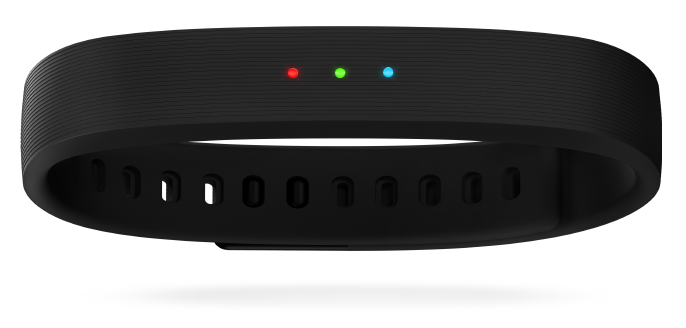
Most people associate Razer with gaming laptops, mice, and other hardware. But at CES 2014, the company unveiled plans to enter the fitness tracker / smartband market with the launch of Nabu, a black wristband that combined basic fitness tracking features with an OLED screen for displaying notifications. One year later, Razer returned to Vegas with the Nabu X and ditched the screen in favor of three LED lights and a much lower price tag.
The original Nabu never really saw a proper commercial rollout, but the Nabu X is now very much on store shelves, and it’s cheap. You can pick one up for $50, and Razer is currently running a two-for-one promotion that basically puts a $25 price on the thing. Is low cost alone enough to make the Nabu X a worthy buy in a crowded field of competition? No, not quite.
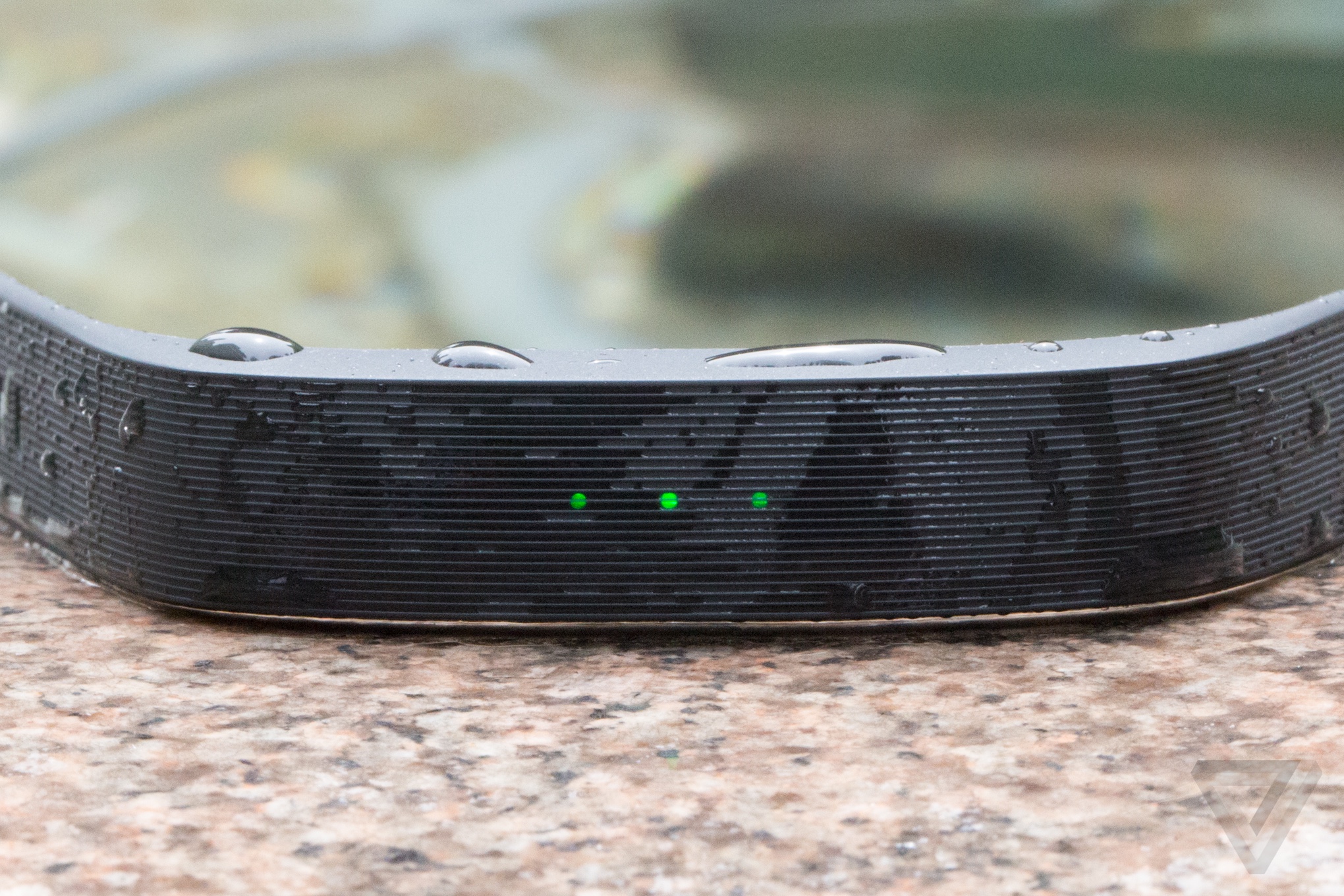
The Nabu X has what I’d call an inoffensive and unthrilling design. It’s a boring (though comfortable) band covered in black silicone rubber. This has the unfortunate side effect of attracting lint and dust within minutes. The smartband is no fun to clean off by hand, but thankfully it’s water resistant so you can just run it under the sink. Unlike the awful clasps we recently saw on the Jawbone 2 and 3, this one is dead simple; there are two teeth that go into holes on the one-size-fits-all strap. You can easily strap the Nabu X on with just one hand, and it never came loose during my testing. I wore it both day and night.

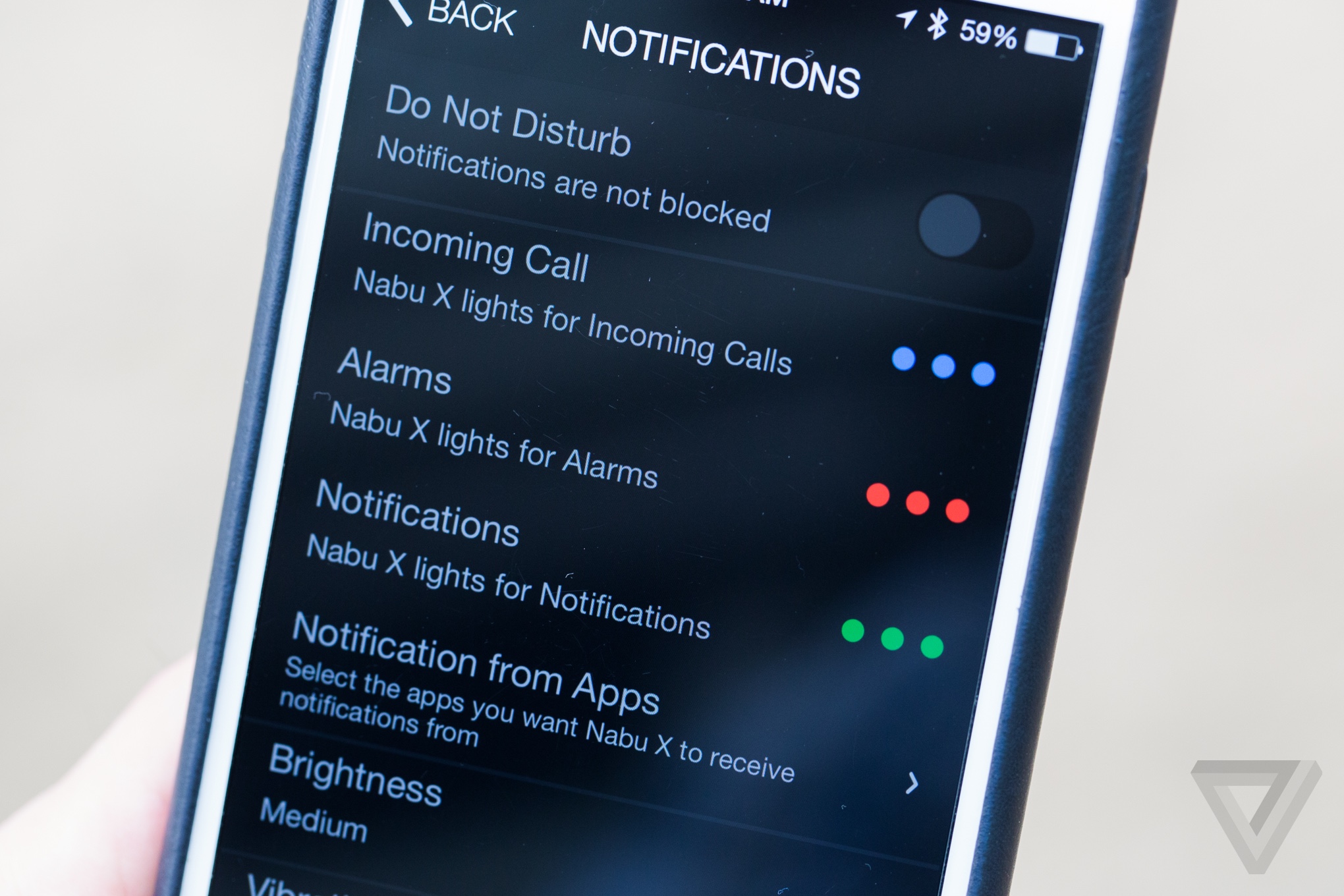
Charging it is pretty inconvenient, though. Since the Nabu X uses a proprietary port, it’s yet another cord to carry around in your bag. Thankfully you won’t have to bother with that very often; Razer’s smartband easily lasted a week before its battery finally gave up. And while proprietary connections are always annoying, this one is at least very secure and won’t accidentally come unplugged.
Inside the Nabu X is a 3-axis accelerometer that it uses for step counting and to track your overall distance each day. The smartband syncs with both Android and iOS via Bluetooth. Windows Phone support isn’t yet offered; Razer says this is because it’s harder to offer the same functionality on Microsoft’s platform.
Up front are those three round LEDs. They’ll light up whenever notifications come in on your phone, and you can also tap twice to get an update on your daily fitness goals (total steps, calories burned, etc.) or the band’s remaining battery life. I hate the tapping interface on Jawbone’s new Up trackers, and I don’t like it any better here. Buttons, please. It’s worth noting that many people have compared the Nabu X to Xiaomi’s dirt cheap Mi Band, and the link is valid. There are some clear aesthetic differences between the two, but fundamentally they’re very similar.

YOU’LL NEED THREE APPS ON YOUR IPHONE TO GET THE MOST FROM NABU X
Razer’s whole vision for the Nabu X starts falling apart when it comes to software. To get the most out of the smartband on iOS, you’ll need to install three different apps on your iPhone. The first is Utility, which handles pairing with the Nabu X and shows critical information like remaining battery percentage. This is also the app you’ll use to trigger the band’s sleep tracking and set alarms. It works decently well as an alarm clock on your wrist. The vibration is so forceful that I can’t imagine anyone sleeping through it. Bizarrely, a separate Home app must be installed from the App Store if you want to view the Nabu X’s stats as a widget in your iPhone’s notification tray. For some reason, Razer couldn’t bundle this into the primary Utility software. And of course there’s the main Fitness app, which I’ll get to shortly.

But first let’s talk about the Nabu X’s strange focus on social features. Razer seems to think that a lot of people will be wearing its smartband someday, so it’s created something called “Pulse” technology that lets you shake hands with another Nabu X owner and instantly exchange contact info (Facebook or Twitter) and compare activity stats. Developers can also build smartphone apps and games that integrate Pulse and are capable of finding nearby Nabu X wearers. But not many are bothering at the moment, and the whole social end of this sounds like a pipe dream. If this were a product made by Jawbone or Fitbit with brand recognition and mass market appeal, maybe you could get away with it. But Pulse really just feels like a tacked on callback to Razer’s gaming roots.
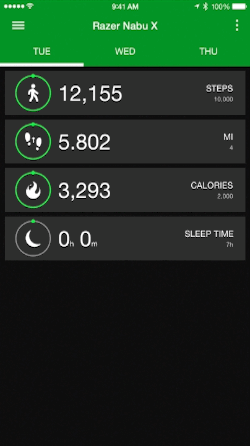

WHERE’D THAT NOTIFICATION COME FROM? WHO KNOWS
And then there are notifications. To signal that you’ve received any type of alert, the Nabu X’s three LEDs will all light up with the same color depending on what kind of notification it is. By default, they’ll turn blue for incoming calls, red for alarms, and green for everything else. And I mean everything else. This is where using the Nabu X starts to become infuriating. There’s absolutely no way to distinguish what app notifications are coming in; you just know your phone has something for you.

Was it a Facebook message? Three green dots. An ESPN score alert? Same thing. Sure, it could just be Trivia Crack pestering me to come play again, but the green lights could also mean I’ve just missed an important email or text message. Without a screen and without text, there’s just no way to know. Sure, getting a vibration on your wrist is useful when your phone is sitting across the room. But if it’s in your pocket, you’ll be fetching it every single time, and that’s maddening.
Filtering which notifications come through on iOS leaves a lot to be desired. Don’t want your wrist to vibrate every time a calendar alert goes off or an email comes in? You’ll have to disable those notifications across all of iOS to make it stop. Things are much easier on Android, where you get full control over precisely which apps the Nabu X will bother notifying you about.
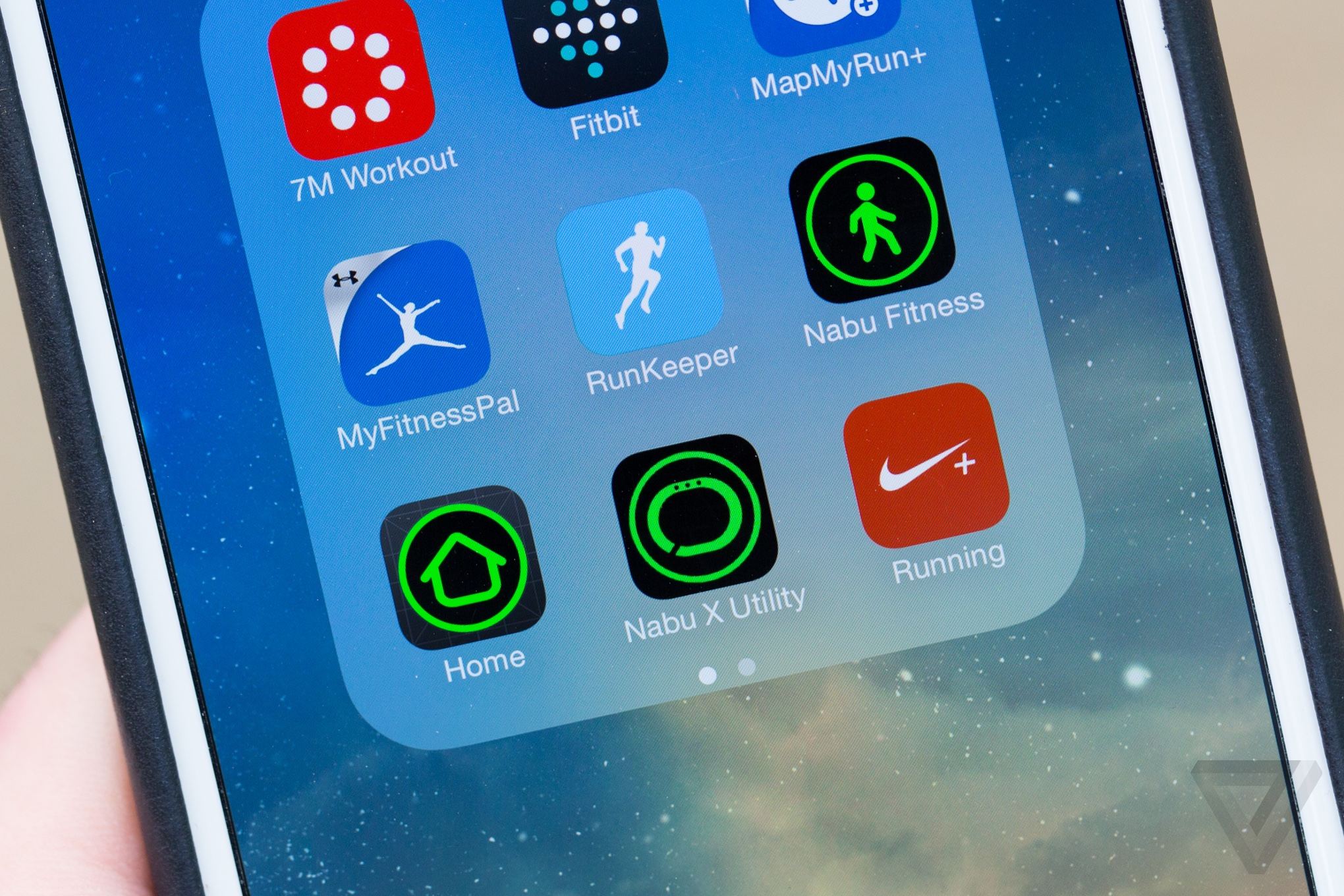
On the fitness side of things, everything here is just barely par for the course. Razer’s Fitness app will display your steps, distance traveled, and calories burned in real time. It’ll also remind you of how much sleep you got the prior evening. You can review these four stats in day, week, month, or year views. Razer includes your resting calories in the figure, so there’s no easy way of seeing how many you’ve actively burned. Another tab lets you set daily goals, but the app offers zero guidance on what you should be aiming for. Don’t expect anything close to what competitors like Jawbone offer; that company’s Up smartphone app basically becomes your own personal fitness coach. On the plus side, you can export the Nabu X’s data to at least one popular service, MapMyFitness.
DITCHING THE DISPLAY WAS A MISTAKE ON RAZER’S PART
Throughout my testing of Nabu X, I arrived at this question: what’s the point? If you’re after basic step tracking, both Google and Apple now offer their own (free) software on Android and iOS, respectively. Google Fit and Apple Health are more than capable of providing you with a basic overview of your daily activity. So can Jawbone’s $50 Up Move — and the app you get with it is great. I’ll cut Razer some slack for being newer to this game, but going with anything from Jawbone or Fitbit is nonetheless a smarter move. And if you want notifications on your wrist, get an Android Wear smartwatch, a Pebble, or the Apple Watch. The Nabu X’s confounding LEDs will only frustrate and stress you out. Razer’s smartband is definitely affordable, but I can’t see why anyone would need this product. It seems like the company started off with a better product than the one it finished with; leaving the screen behind was a mistake, even if the end result would’ve cost a bit more. But if history is any indication, Razer will be ready to try again at CES 2016.
(theverge.com)
Getac V110 Review
The Pros
Rugged; Hot-swappable batteries; Light for its size; Bright display
The Cons
Poor webcam; No slot for stylus in notebook
Verdict
The fully rugged Getac V110 convertible can take a beating and delivers a powerful Core i5 punch in a portable design.

Not only do fully rugged notebooks have to perform well for a variety of tasks, but they have to do so in environments that would reduce most other systems to a heap of plastic and metal. With an Intel Core i7 processor and a tough-as-nails magnesium alloy chassis, Getac’s new V110 ($3,298 as tested) excels at both its duties. Plus, this 11-inch touch-screen convertible is light for a rugged notebook, making it well-suited for those times when you need to lug it around, whether it’s around the construction site or the middle of the desert.
Design: Twist and Shout
Even in this age of 2-in-1 notebooks, it’s still fairly rare to see a system that lets you rotate the display on two axes; Dell’s rugged Latitude notebook used to have this hinge before it switched to a different mechanism. In order to go from laptop to tablet mode on the Getac, you lift the lid 90 degrees, twist it 180 degrees, then fold it back onto the keyboard.

It’s an older style, but it’s still effective. Helpfully, markings on the bottom bezel tell you which way to turn the screen for laptop or tablet mode, so that you don’t wreck the hinge by accident. A spring-loaded latch on the front secures the lid in place.
I also like that pins on each of the corners help secure the screen in place, but they could become bothersome if you try to rest your palm on the lower part of the display.
You’re never going to mistake the 4.4-pound, 12 x 9 x 1.3-inch V110 for an iPad Air, but all things considered, it wasn’t too uncomfortable to hold the Getac in the crook of my arm while I drew on the screen.
To make it easier to use in tablet mode, the V110 has buttons along the front edge for power and volume, as well as two that are user-configurable. These let you do things such as quick-launch the camera or any other installed app.

The left side has locking bays that grant you access to the hard drive and one of its batteries, while the right side has a bay for the second battery, as well as slots for USB, a smart card reader and an ExpressCard/54 slot. The only thing missing from the V110 is a slot for the included stylus. However, it can be tethered to and stowed in the removable plastic handle that comes with the notebook.

Durability and Security
The Getac V110 is built to take all kinds of abuse. Its chassis and lid is made from magnesium alloy, and rubber bumpers at each of its corners help dampen the shock from a fall. It has a MIL-STD 810G rating, which means it can withstand drops from 4 feet, and operating temperatures from minus 5.8 degrees Fahrenheit to 140 F.
While it can’t be completely submerged in water, its sealed ports have an IP65 rating, which means the system can withstand water being poured on it.
I put the V110 to the test by dropping it several times from 4 feet with the system on and the lid closed. I also poured nearly half a watering can’s worth of water on the notebook’s keyboard, and the system came through both tests without issue.
In case something does go wrong, the notebook comes with a three-year warranty that covers all major system components. Getac uses FedEx TechConnect to service the unit, which helps ensure faster turnaround times.
The V110 also has several security features available, including an optional fingerprint reader.
Keyboard and Touchpad

At first glance, I really liked the V110’s keyboard. The island-style keys have big, bold lettering, making the backlit layout easier to see in the dark. The keys also benefit from an above-average travel of 2.1mm, and require 78 grams of force to press, also better than average. However, once I started typing, my enthusiasm dipped. I found my fingers sliding off the edges of the keys, which would dip down around their edges, exacerbating the problem. As a result, on the typingtest.com test, I averaged 59 words per minute, below my average of around 68 wpm.

Built into the bottom of the 3.5 x 1.75 touchpad, the V110’s mouse buttons were somewhat hard to press. Such is the price of having a spill-resistant deck.
Display: Daylight Bright
Designed to be used in almost any condition, the V110’s 11.6-inch 1366 x 768-pixel screen is one of the brightest we’ve ever tested. Registering a retina-searing 931 nits, I could easily see it in direct sunlight. Even the darker scenes in the Star Wars: The Force Awakens trailer were somewhat visible.
Under office lighting, the same trailer looked pretty good, too. The crimson of the Empire’s banners was well saturated, and there was great contrast between the white and the black of the stormtroopers’ armor.

On our lab tests, though, the V110 wasn’t the most colorful, as the display reproduced only 70.5 percent of the sRGB color gamut. Its Delta-E rating of 4.03 (where numbers closer to 0 are better) is also far from accurate.
The V110’s LumiBond 2 panel supports 10-finger touch — bare or with a glove, so Luke Skywalker is covered — and it also worked with an included stylus.

The front-facing speakers on the V110 were able to pump out dialogue and music fairly well -it’ll suffice for video chats — but don’t expect high-fidelity audio.
Performance
The V110’s 2.2-GHz Intel Core i5-5200U, 8GB of RAM and 128GB SSD provides more than enough power for pretty much anything you throw at it. The machine never stuttered as I browsed the Web, played videos and crunched numbers.
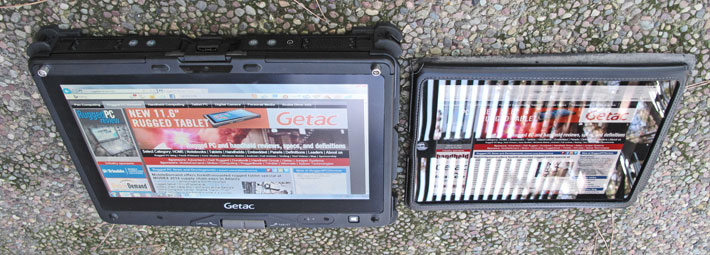
On Geekbench 3, the V110’s score of 5,318 was higher than the ultraportable average (4,696), and on a par with other notebooks with the same CPU, such as the $899 Dell XPS 13 (5,530).
While not the fastest, the Getac’s 128GB SSD duplicated 5GB of multimedia files at a rate of 154.2 MBps, about 30 MBps slower than average, but faster than the 87.7 MBps offered by the Dell.
The V110 was able to pair 20,000 names and addresses in OpenOffice in 5 minutes and 7 seconds. That’s a good 2 minutes faster than the average ultraportable (7:29).

Its integrated Intel HD Graphics 5500 proved capable, but not commendable, as it averaged a not-quite-playable 29 fps in World of Warcraft with the graphics set to Good and the resolution at its native 1366 x 768 (we consider 30 fps to be the bare minimum). That’s well below the typical ultraportable (36 fps) as well as the Dell (41 fps).
Software
The Getac G Manager is a small, handy utility that shows you the current state of the notebook (from Wi-Fi strength to battery life and health), and lets you configure the touch screen for finger, glove or pen input. This app also enables you to monitor GPS (if installed), as well as select if you want to use any external antennas connected to the V110’s docking station.

While it has a number of manual controls (white balance, contrast, hue, night mode), the V110’s camera is worse than what you’ll get from a budget smartphone. Not only were images low-res, but they had a gauzy cast that made it look as if I was the subject of a Barbara Walters interview.
Battery Life
The dual batteries in the V110 combined to last for 8 hours and 56 minutes on the Laptop Battery Test (Web surfing via Wi-Fi). That’s just a few minutes shy of our ultraportable average (9 hours). However, the V110 has dual hot-swappable batteries, so provided you have enough spares, you could keep the notebook on indefinitely.
Configurations
The V110 is available with a 2.3-GHz Intel Core i5-5300U, 2.4-GHz Intel Core i7-5500U, or 2.6-GHz Intel Core i7-5600U processors. The notebook can also be configured with a 4-band LTE or an 8-band 3G antenna GPS.
Getac also sells a variety of accessories for the V110, including docks (in-office and in-vehicle), extra batteries and even a solar charger.

Bottom Line
Just because a notebook is rugged doesn’t mean you have to sacrifice portability, especially in the case of a convertible. The Getac V110 successfully combines the power of an ultraportable like the Dell XPS 13 and the versatility of a tablet like the iPad in a single device that field workers can take practically anywhere. Its hardened exterior means this machine will survive conditions that would turn other devices into little more than spare parts. Although I wish Getac offered a holster on the V110 for the included stylus, and the webcam could be better, overall this is a highly durable ultraportable that’s well worth the investment.
(laptopmag.com)
BB-8 by Sphero Review: the best Star Wars toy ever made

The “BB-8 by Sphero” is a robot toy that combines the high-tech remote-control spherical fun of the original Sphero with the life force of the newest droid hero from Star Wars. This is the “ball droid” you’ve likely seen in the first, second, and/or third teaser trailer video for Star Wars: The Force Awakens. This device incorporates remote control with a smartphone, augmented reality, and the ability to roll around and act entirely autonomously all around your house, recording data and exploring your hallways as he does so.
BB-8 by Sphero is a remote-controlled robot in spherical form. Inside the body of this droid is a set of wheels which allow it to roll around in any direction. Atop this particular Sphero is a head that sticks to the body magnetically.
The app that goes with this Sphero toy is made specifically, uniquely for it. BB-8 has his own Star Wars-themed control app here, and three functions (for starters) make him come alive.
You’ll have a basic control to control him yourself, you’ll have autonomous control, and you’ll have holographic camera messaging.
Above you’ll see the first Holographic message (using augmented reality with the iPad’s camera and BB-8), including information on the newest wave of X-Wings for Star Wars: The Force Awakens.
Below you’ll see a readout from the app shown during autonomous control. Allowing BB-8 to explore your house results in some rather interesting bits of info.
Inside this little monster is a battery that’ll last you 60 minutes or so. The box says 60 minutes and, based on the at-least 10 times we’ve run the power from full to empty, we’ve found 50 minutes to be the smallest amount of time BB-8 will last at one go.

This BB-8 has a wireless charger that does the same thing as each of the other wireless chargers with other Sphero devices, only here it’s got a rubbery top that holds the device in place while it’s charging up – also there’s a blue light that blinks while BB-8 is charging and stays blue when he’s charged.
This toy is 11.4-cm tall and 7.3-cm wide. The sphere bit is the same size as the Sphero 2, while the head is just about the size of a half of a golf ball.
[su_slider source=”media: 15802,15803,15804,15805″ height=”400″ title=”no”][su_slider source=”media: 10751,10754,10755,10756,10757,10759,10760,10761″ height=”400″ title=”no”]HÌNH[/su_slider][/su_slider]
Under the head is a couple of wheels that go in one direction. The head either has a magnet or a piece of metal in it – we’re not entirely sure. The same goes for the inside of the sphere – there’s some sort of rounded wire that goes from the mechanical wheel base to the opposite side of the inside of the sphere.
The rudimentary illustration you see below shows where the components are in the non-transparent Sphero we’re reviewing today. The transparent edition goes by the name of [Sphero SPRK edition] – made for students.
[su_slider source=”media: 15806,15807,15808,15809,15810″ height=”400″ title=”no”][su_slider source=”media: 10751,10754,10755,10756,10757,10759,10760,10761″ height=”400″ title=”no”]HÌNH[/su_slider][/su_slider]

AGAIN – to be clear – this transparent Sphero is the SPRK edition, while the BB-8 is white with printing on the outside of his body. The BB-8 head does NOT attach to this SPRK edition (we tried!)
The only bit about this toy we’re concerned with is his antenna. They’re tiny – super, teeny tiny – and therefor prone to bending. If you’ve got a 4-year-old in your home, expect these antenna to be busted directly off within a week. If you’re OK with that, no worries!
BB-8’s head sticks to his body just so long as you don’t go off any ramps. Going over a 3-inch jump will result in the head being bounced off. The magnets here are strong, but they’re not THAT strong. They’ve got to strike a balance between sticking on always and being loose enough to let the head move around the body.

This device is being controlled with an iPad. You can also control it with an iPhone or an Android device.
Below you’ll see several screens from the control app – it’s super simple to use.
[su_slider source=”media: 15809,15810,15808,15807,15806″ height=”400″ title=”no”][su_slider source=”media: 10751,10754,10755,10756,10757,10759,10760,10761″ height=”400″ title=”no”]HÌNH[/su_slider][/su_slider]
BB-8 by Sphero does what only the most expensive, above-and-beyond, home-made Star Wars models of droids have done in the past. BB-8 isn’t just a representation of the droid you’ll see in the films.
BB-8 is BB-8.
He’s a tiny version of the real thing.
If there’s one Star Wars toy you’re going to need from The Force Awakens, BB-8 by Sphero is it. Even if you’re not a toy collector. No matter your age. This little droid is an awesome piece of sci-fi history.
This device will be released to stores as of this Friday – Force Friday, that is – and it’ll cost you $149.99, and it’ll be launching at Apple stores, Best Buy, and Sphero’s stores online.
(slashgear.com)
Jeep Cherokee security issue patched via USB drive mailed to owners

A bit over a month ago, we talked about the significant security issue that was exploited by security researchers to take control of a Jeep Cherokee from the driver from afar. The automotive and security world were scandalized that a hack of this magnitude with the potential for driver injury could occur. Chrysler has now issued a patch for the 2014 Jeep Cherokee that plugs the security hole that allowed hackers to take over the transmission and brakes of the car.
The patch was mailed to owners of the vehicle via the US Postal Service Inside a letter on a USB drive. The anger from some comes in that with this major security issue being patched this way, it opens the door for owners of these vehicles to be hacked in the future by spoofed similar mailers.

Chrysler says that the scenario of a spoofed mailer being sent out to trick vehicle owners into installing rouge software in their vehicles is only speculation. The automaker also pointed out that its drives are read only, which does nothing for the conditioning that the company has done to get drivers to plug flash drives received via the mail into their car when they look official.
The software patch sent out via USB isn’t the only way that cars are being protected from similar attack vectors in the future. Chrysler also added a layer of security on the Uconnect Sprint network connection to block wireless attacks like the one that took over some controls in the 2014 Cherokee.
(slashgear.com)
Uber unleashes Stormtrooper rides for Force Friday
As Force Friday begins, seeing the release of new Star Wars toys in celebration of The Force Awakens, even Uber is getting in on the marketing extravaganza. As Hot Wheels are unveiling a number of new toy cars inspired by Star Wars characters, the company has partnered with the ride-hailing service to unleash a fleet of life-size First Order Stormtrooper vehicles on New York City. The white Dodge Chargers feature special black decals to help with the Stormtrooper look, and are complete with Hot Wheels logos.
…
Read full post here:
https://www.slashgear.com/uber-unleashes-stormtrooper-rides-for-force-friday-04401824/
2016 Jaguar F-Pace SUV final street-ready look revealed
This morning Jaguar has revealed their first official image of the 2016 Jaguar F-Pace SUV. This vehicle’s first photo is captured in Shanghai – entirely appropriate due to the high potential market for this vehicle in greater China. This vehicle will likely be revealed in full – with full details, at the Frankfurt motor show taking place next week. The F-Pace is the first SUV in Jaguar history. Up until now, this vehicle has not been pictured in its final street-ready colors and accents.
…
Read full post here:
https://www.slashgear.com/2016-jaguar-f-pace-suv-final-street-ready-look-revealed-04402089/
Self-driving car lidars can be spoofed by $60 gadget
Autonomous cars naturally rely on a variety of sensors in order to determine and navigate through its environment. Apparently, one of the most expensive sensors available can be foiled a a cheap, makeshift setup. Software security researcher Jonathan Petit demonstrated how a laser radar or lidar, specifically one from the IBEO Lux, could be tricked into seeing phantom cars, pedestrians, or walls, which could effectively paralyze the self-driving vehicle from moving or at the very least prevent it from being able to accurately analyze its surroundings.
…
Read full post here:
https://www.slashgear.com/self-driving-car-lidars-can-be-spoofed-by-60-gadget-07402237/
Musk says Signature Edition Model X deliveries start September 29
A few days back we mentioned that the first production run of Tesla Model X SUV orders had begun. For the initial run the only version available was the high-end Signature Series with a few other options that could be added. Tesla CEO Elon Musk has taken to twitter to clarify a few things, first he said that the Signature Series Model X is costly because it is completely loaded.
Pretty much everything you can get on a Model X is included in the Signature Edition other than a few other choices. One of those options is the Ludicrous Speed update. A lot of people were shocked when the list price was announced to start at $132k for the first Model X vehicles, but now you know why.
…
Read full post here:
https://www.slashgear.com/musk-says-signature-edition-model-x-delivers-start-september-29-05401821/
Uber fixes ETA privacy gap that left full trip details public
Uber has fixed a gaping privacy hole which left ride details for some passengers visible in Google searches, with full address information available even months after the journey. The glitch was a side-effect of Uber’s “Share my ETA” feature, launched in 2013, which allows users to show others the progress of their trip.
After choosing “Share my ETA” in the Uber app, the user would get a shareable link that opened up a map of the journey, the final destination and how long it would take to reach it, and information on the driver themselves.
…
Read full post here:
https://www.slashgear.com/uber-fixes-eta-privacy-gap-that-left-full-trip-details-public-05402217/
The Gear S2 vs Apple Watch showdown I really care about
You can debate specs, argue square versus circle until you’re blue in the face, but the big Gear S2 vs Apple Watch argument is which is more fidget-friendly. Samsung’s new Tizen-powered smartwatch, launched at IFA 2015 last week to broadly positive reviews, is not only the first from the company to have a round display, but the first to use a clever rotating bezel for navigation.
As a self-confessed fidgeter, seldom happier in meetings, on trains and busses, or just while watching TV to be absent-mindedly tweaking and tapping with my fingertips, the Gear S2’s scroll wheel is mighty appealing. Samsung definitely got the balance and the resistance right: the wheel smoothly turns with just enough of a click that you feel each notch, but not so much to make the whole thing jerky.
…
Read full post here:
https://www.slashgear.com/the-gear-s2-vs-apple-watch-showdown-i-really-care-about-05402220/
Samsung Gear S2 hands-on: Tizen teaches Android Wear circles
Samsung’s no stranger to the smartwatch, but it’s taken the arrival of the Gear S2 for it to finally embrace circular displays. There are two models, both with the same core specifications but catering to different tastes. The regular Gear 2 is the more minimalistic, futuristic of the two, with rubber straps and a smooth finish.
In contrast, the Gear S2 classic has a shiny black casing, a ridged bezel, and leather straps. Bands on both can be switched out, but Samsung has used a proprietary connector on the Gear 2; you’ll have to pick between its own range of options.
…
Read full post here:
https://www.slashgear.com/samsung-gear-s2-hands-on-tizen-teaches-android-wear-circles-03401195/
Samsung said exploring Gear S2 for iPhone
First Android Wear… next Tizen? Samsung is reportedly investigating making its Gear S2 wearable compatible with iPhone, following Google in taking on the Apple Watch on its home turf. While not yet the Korean company’s official stance, according to one spokesperson it’s something being closely examined.
How to use WhatsApp Web: Get WhatsApp on your phone, tablet, laptop and PC. Plus how to use WhatsApp Web on iPhone and iPad
WhatsApp is now available on the web via the Chrome browser, and in a tablet app, meaning it’s possible to simultaneously access your WhatsApp account on your phone,tablet, laptop and PC without a hack. Here’s how to get WhatsApp on your phone, tablet, laptop AND your PC, all at once.
WhatsApp Web: Before you begin
…
Read full post here:
https://www.techadvisor.co.uk/
How to take better photos on your iPhone: tips, apps and accessories for improving photos and videos
If you want to take better photos using your iPhone, we’ve got some great tips on how to do it. You don’t have to spend any money, but if you can, there are apps and accessories which will take your photos – and videos – to the next level.
These days, I tend to use my iPhone way more than my DSLR for photos and videos because it’s always to hand. It takes pretty good photos but there’s always room for improvement. Here are some tips on how to make sure you end up with images that are far better than mere snaps, as well as videos that look less amateur.
…
Read full post here:
https://www.techadvisor.co.uk/
How to hide your phone number on Facebook (and why you need to do so immediately)
Facebook encourages users to add their phone numbers for security, but actually doing so makes them more vulnerable. Here’s how to hide your phone number on Facebook – and why you should do so immediately.
Have you added your phone number to your Facebook account? If the answer to that question is yes, did you know that anyone can find out information about you simply by typing your phone number into Google? They don’t even need to know it’s your phone number – they can just enter a string of digits and the results returned will be your data on a plate.
…
Read full post here:
https://www.techadvisor.co.uk/
How to delete saved messages and texts on iOS
iOS’s Messages app can get cluttered up in a hurry, between conversations with friends over lunch plans, passive-aggressive texts from old flings, and automated messages reminding you to pay your phone bill. But iOS comes with a few tools that can help you control the clutter and keep Messages under control.
Delete individual text messages
Have you ever scrolled through your text message history and thought, “I can’t believe I said that?” With iOS, you can easily delete the offending message.
…
Read full post here:
https://www.techadvisor.co.uk/
12 time-saving tips for the Chrome Android browser (with video)
Mobile Web browsing is all about finding what you need quickly and with as little hassle as possible — at least, in theory. In the real world, the experience of surfing sites from your smartphone or tablet is often anything but enjoyable.
From sites that have not-so-friendly mobile interfaces to browser commands that take too many steps to execute, hopping around the World Wide Internuts from a handheld device leaves plenty of room for improvement.
…
Read full post here:
https://www.techadvisor.co.uk/
Asus VivoWatch review
The Asus VivoWatch seems to be the perfect combination of smartwatch and fitness tracker, decent specs and low $150 price, useful screen and great ten day battery life.
At first glance, it’s a fitness focused Pebble rival that’s iOS and Android compatible but dig deeper and Asus is really looking for a share of Fitbit, Jawbone and Garmin’s success. Can this activity and sleep tracking, heart rate monitoring bargain smartwatch become your everyday fitness and wellbeing wearable?
…
Read full post here:
https://www.wareable.com/
11 Most Interesting Turbocharged Cars
1. PORSCHE TURBO CARRERA (1976)
The Porsche Turbo Carrera is one of the most interesting turbocharged cars to have been produced. Also referred to as the Turbo Carrera or 911 Turbo, the vehicle is one of the most iconic from the 1970s and is the vehicle that is thought of when car enthusiasts discuss turbocharged cars.
…
Read full post here:
http://www.carophile.com/



